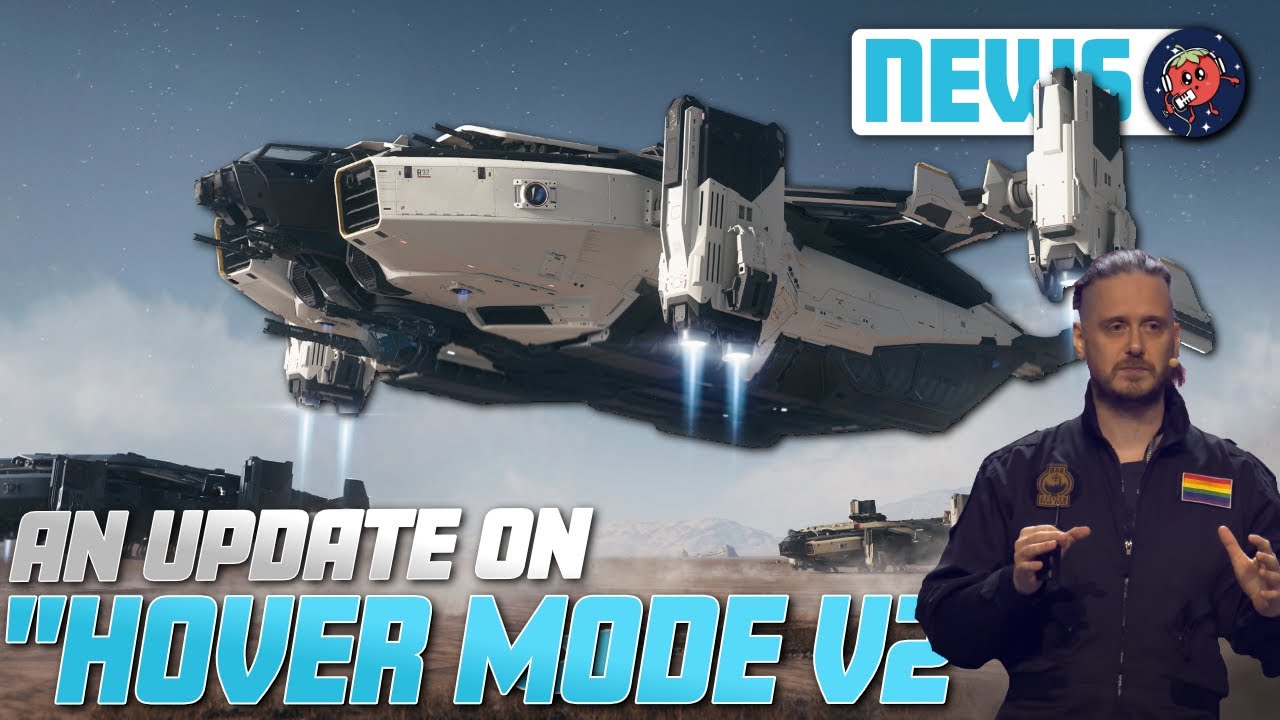The video explains that Star Citizen’s atmospheric flight model is shifting from simple hover mechanics to a more realistic system based on aerodynamics, physics, and thrust limitations, emphasizing skillful flying and challenging maneuvers. Upcoming updates will remove hover mode, introduce stall mechanics, and enable manual control modes, making atmospheric flight more immersive, demanding, and authentic for players.
The video provides an in-depth overview of the upcoming changes and plans for Star Citizen’s atmospheric flight model, focusing on recent developer insights from Yogi Klatt and past statements from the flight team. It explains that the game is moving away from the traditional hover mode, which allowed ships to float indefinitely with minimal control, towards a more realistic and physically motivated system. This new system emphasizes aerodynamic forces and thrust limitations, making large ships less capable of hovering effortlessly and introducing meaningful trade-offs for pilots.
A key feature discussed is the implementation of a proper stall mechanic, demonstrated during Citizen Con 2023. When a ship’s airflow over lift surfaces ceases, it enters a stall state where control authority is lost, and the ship begins to fall. Players will be able to intentionally induce stalls by disconnecting thrusters or reducing speed, enabling gliding and other atmospheric maneuvers. However, in the future, thrusters will automatically assist in stabilizing ships near stall speeds, preventing players from holding unstable positions for long periods, thus adding realism and challenge to atmospheric flight.
The developers are also working on refining how ships transition between space and atmospheric environments. They aim to balance thruster efficiency and aerodynamics, especially for larger ships like the Idris or Polaris, which currently hover too easily. The new approach involves adjusting thruster effectiveness based on ship size and environment, and potentially adding control surface tech to enable aerodynamic control. This will make flying large ships in atmosphere more challenging and realistic, with trade-offs such as increased wear and tear or ship overheating, encouraging players to choose their ships and flight styles carefully.
Further, the video discusses the removal of hover mode and the introduction of an “uncoupled” mode where players control their ships without assistance from the Flight Control System (IFCS). Disabling IFCS would allow for helicopter-style flying, but only for advanced users willing to manage manual control and stability. This mode would remove automatic altitude and balance assistance, making atmospheric flight more demanding but also more authentic. The developers are considering UI improvements and additional automation, like altitude hold or auto-landing aids, to help players manage these complex controls.
Overall, the upcoming updates aim to create a more immersive and realistic atmospheric flight experience by integrating control surfaces, physics-based aerodynamics, and more nuanced ship handling. While some features like heat management and control surface tech are still in development, the direction is clear: ships will no longer hover effortlessly, and flying will require skill and understanding of the physics involved. These changes are expected to roll out gradually, with testable features appearing soon, ultimately making atmospheric flight more challenging, authentic, and rewarding for players.
